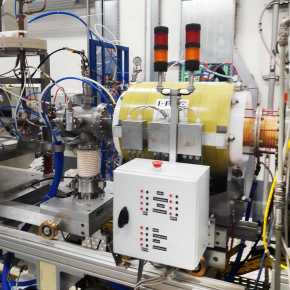SPIRAL2's LINAC: a first oxygen beam accelerated to 7 MeV/u
SPIRAL2's LINAC successfully produced its first oxygen beam on September 16. After protons at the end of 2019 and deutons in 2021, GANIL's linear accelerator is thus taking its first steps in accelerating heavy ions produced by the PHOENIX_V3 source. This is an essential development for the scientific program to come with the S3 spectrometer currently being installed.
The heavy ion beam was composed of oxygen atoms 18 stripped of 6 of their electrons (heavy ions 18O6+). They were accelerated up to the energy of 7 MeV per nucleon. The beam reached the global power of 1 kW, which correspond to a continuous ion current of 50 micro amperes. The observed LINAC transmission is about 98% without any particular optimization.
Oxygen 18 is a pilot beam that allows to set many ions in the LINAC. It has a maximum mass-to-electron charge ratio of M/Q =3, requiring the equipment to operate at maximum capacity. In addition, the other electronic charge states of oxygen could be accelerated with a quasi-automatic setting, demonstrating the good control and the great reliability of the accelerator. A great success for GANIL-SPIRAL2 teams.
